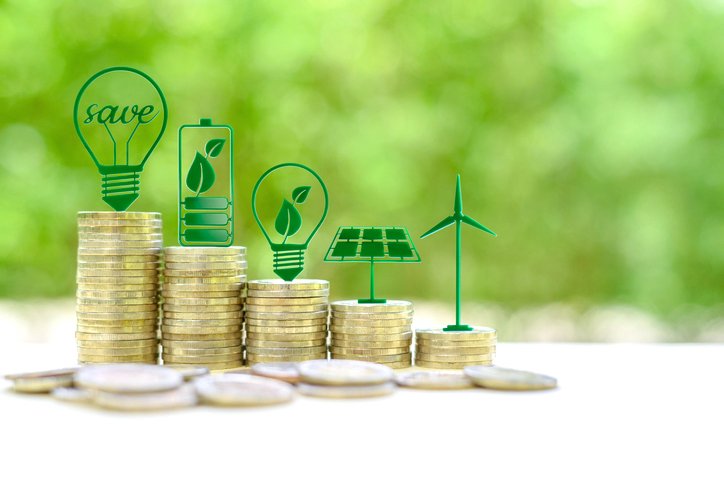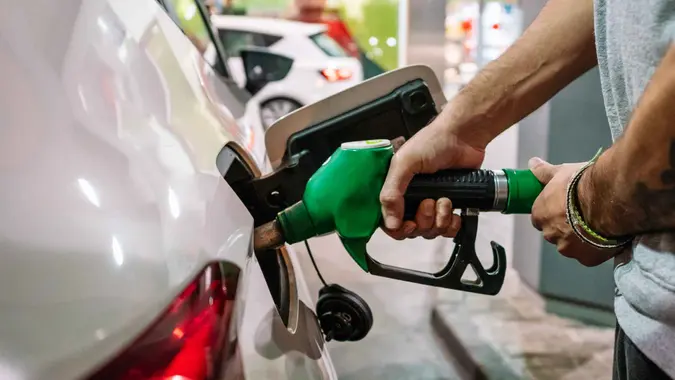
Introduction
Small savings can add up, especially when fuel and daily expenses keep rising. In 2024, gas prices constantly fluctuated, and the U.S. Energy Information Administration even projects that crude oil costs may increase in 2025. That kind of sudden shift can have a big impact on how much we all pay to fill up our cars in the new year.
Proven Gas-Saving Strategies that Work

There are many strategies to save money on gas, and I’ve personally tested quite a few of them. Using gas rewards, credit cards, and gas apps helped me cut costs, while changing my driving habits and maintaining my vehicle made a real difference.
- Tracking Gas Prices Effectively
From my own experience, I noticed that gas can feel expensive, but there’s also good news—prices often drop during the back half of summer. For example, in Florida, rates usually sit below the national average.
- Using Gas Apps for Smarter Savings
I keep a list of changes in a notebook I leave in my glovebox, and sometimes I rely on a gas-tracking app to track and implement my routines. These small habits can maximize the impact on my wallet, giving me more breathing room in my budget.
Best Gas Rewards Credit Cards for Saving Money
When I first looked into saving on gas purchases, I noticed that many gasoline companies promote their own credit cards.
- Benefits of General Gas Rewards Cards
With these rewards cards, you can earn rewards every time a dollar is spent on gas. The return is typically at a rate of around 3 to 5%.
- Things to Check Before Signing Up
While comparing options, it’s important to look at the rewards rules, caps, and even the annual percentage rate (APR) or extra fees that might apply.
Regular vs Premium Gas
When I first started checking how much premium gas really costs, I was shocked to see that it could be about 92 cents more per gallon compared to regular fuel. In fact, November 2024 data from the U.S. Energy Information Administration (EIA) showed that choosing the wrong grade can quickly add up in expenses. Unless a car manufacturer clearly recommends it, paying extra for a higher grade is rarely necessary. Using a lower grade won’t usually hurt car performance, and even AAA research and Consumer Reports confirm this.
I’ve found that buying Top Tier gasoline is a smarter move. It is available across different octane levels, and thanks to special additives, it helps clean and protect engines. Even though it may be about 3 cents more per gallon compared to non-Top Tier fuel, it helps reduce harmful deposits and can decrease problems that affect fuel economy. Looking for the Top Tier logo at gas stations is an easy way to make sure you’re getting the right fuel.
Smart Ways to Buy Gas for Less
One thing I’ve learned while driving around town is that not all gas stations charge the same.
Factors That Influence Gas Prices
- Location
- Retailer marketing
- State taxes
Even local taxes all play a role in the final price per gallon.

These days, my smart phone is the best tool to help me buy gas at the least expensive places. I use a gas price app and sometimes gas buddy to start tracking the current prices. A friend showed me how easy it is to use phone apps, gas price trackers, and even navigation apps that not only give directions but also show where gas cheaper options are. On a highway, these tools help me find a filling station without wasting fuel. If I don’t plan well, driving across town for cheaper gas can actually burns more fuel, which means losing money instead of gaining value.
Why a Fuel-Efficient Car Saves You Thousands
One of the biggest lessons I learned was that the type of car you drive has a massive impact on your expenses. Each refill of the tank might seem small, but when you look at the average miles per gallon, the difference between one vehicle and another quickly adds up. The truth is, gas costs can drain hundreds or even thousands of dollars from your budget yearly, especially when gas prices suddenly spike.
Comparing Hybrid, Electric, and Gas Vehicles
Using the FuelEconomy.gov Find and Compare tool, I saw how fuel-efficient vehicles deliver more miles for less price.
Smart Driving Habits to Improve Fuel Economy
When it comes to saving on gas, one of the easiest steps is changing the way you drive. Many people don’t realize how much driving aggressively with rapid acceleration, sudden braking, or cruising at high speeds affects fuel economy. The Department of Energy notes that aggressive driving can cut gas mileage by several percent, leading not only to wasted money but also more wear and tear on your car. I’ve seen how simple smart driving habits—like keeping your mph steady and practicing safe driving—help avoid accidents and even earn discounts on car insurance.
Don’t forget the role of tires. Low pressure or underinflated tires can reduce efficiency and cost you extra money over time. The Department of Transportation recommends keeping tires at the recommended level or recommended PSI, which you can usually find embossed on the side of the tire or on the sticker inside the driver-side door jamb. I check mine often, because even being a few PSI off can cut mileage by a percent. If tires wear out too quickly, you’ll end up needing to replace them sooner, which is another expense. Keeping them properly inflated is a simple step that goes a long way in buying gas less often.
Drive Less, Save More
One of the most practical ways to save money on gas is by cutting back on unnecessary driving.
Practical Gas-Saving Tips That Really Work
Even simple steps can make a difference in long-term fuel savings.
I realized that even something as simple as choosing the correct motor oil makes a difference. I always check my owner’s manual to confirm which oil is best because sticking with the recommended motor oil helps me avoid costly repairs later.
Another thing that surprised me was how much smoother driving at constant speeds can help. Following speed limits not only avoids tickets but also saves fuel. Using cruise control on highways also prevents wasting fuel with sudden stops, hard presses on the gas pedal, and unnecessary braking in both the city and longer trips.
Air resistance is another hidden factor. I noticed when my car has the windows down, the aerodynamic drag increases because of wind resistance. At highway speeds, the engine power works harder, especially with open windows or a sunroof. While fresh air feels good, it hurts aerodynamics. Similarly, keeping cargo racks or vehicle roof racks on the car creates extra drag. The Department of Energy even highlights how a rooftop bike rack with bicycles, towing a trailer, or carrying heavy loads adds weight and hurts mileage, leading to higher fuel costs per gallon. I once drove a Nissan Altima fully loaded, and I saw the mileage drop compared to when it was lighter.
Using the Right Motor Oil
The correct grade of oil keeps the engine running smoothly, improves mileage, and prevents costly repairs.
Cruise Control and Speed Management
Maintaining steady speeds—especially at 55 mph versus 65 mph—helps maximize gas efficiency.
Reduce Air Resistance and Extra Weight
Avoid open windows at high speeds, remove cargo racks, and keep vehicles lighter to reduce drag and improve mileage.
FAQs
1. Do gas rewards credit cards really help?
Yes, Gas rewards credit really helped.
2. How can I save gas without driving less?
If reducing trips isn’t possible, you can still save gas by using cruise control on highways, removing extra weight from your car, and avoiding long idling periods.